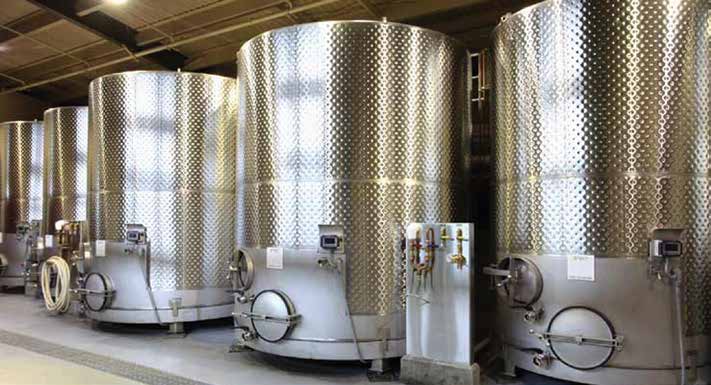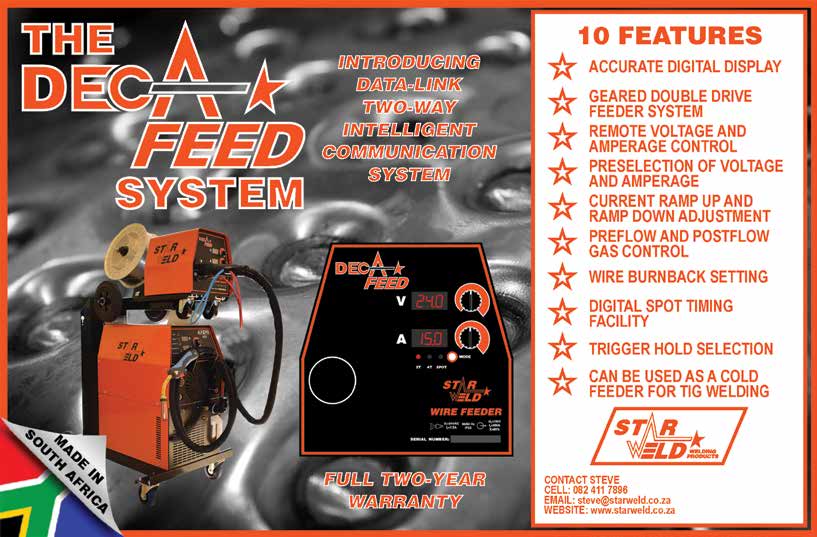
Dimple jackets are used in the food and beverage industry to help keep their products at the required temperature
A standard feature for many tanks and vessels, particularly those used in food and beverage applications, is what’s known as cavity plate, dimple plate or cooling jackets. ‘Dimple’ refers to the uniformly bumpy surface of the plate. Dimple jackets are essentially an outer skin on the shell of the tank that is formed so that there is a cavity between the outside of the tank and a second wrap of material through which fluid can be run to either cool or heat the tank.
These jackets provide a way for wine makers, dairy factories, brewers and other industries to keep their products at the right temperature and optimise their processes.
The dimple jackets’ thin external shell is fixed to the vessel with welds that are located in regular patterns. These so-called “dimples” have the additional function of imparting turbulence to the fluid, as it flows through the jacket. There are two methods of attaching the dimple jackets to the vessels. This is done in the form of either GTAW (DC Tig) or GMAW (Mig) processes.
THE FABRICATION PROCESS
Full Swing Engineering CEO, Hennie van Niekerk, prefers using the Mig process to attach thermal dimple jackets to vessels. His preference is based on the reduced heat input and the speed advantage of this technique. He, however, acknowledges that it can have its pitfalls. Firstly the Mig machine must have a spot welding timer function, which controls the exact amount of arc time needed for a full penetration weld without burning through the material. Van Niekerk also says the other consideration is that it is vital to have an extended post flow gas control that protects the weld pool against atmospheric contamination during the critical cooling phase.
Full Swing Engineering builds vessels ranging from 100L to 120 000L capacities. Van Niekerk says that “the number of dimple welds per square meter can vary from 160 to as many as 280. Therefore it is critical to repeatedly get quality full penetration and water tight welds in as short a time span as possible.”
THE SOLUTION
Starweld, the first local company to build fully digital welding machines in the country, recently supplied the newly introduced Starweld Deca Wire Feed System to Full Swing Engineering.
With this system Van Niekerk is able to control the spot weld time digitally to within one tenth of a second. The gas pre and post flow times, can be set as desired, to protect against atmospheric gas contamination. Both the current ramp up and ramp down time can be controlled.
This ensures smooth starts to weld and eliminates crater cavities at the end of the welds.
The welding volts and amps can be remotely controlled on the feeder, and are digitally displayed. The volts and amps can be pre-selected to within one tenth of a volt, or a single amp.
The Deca Wire Feeder supplied to Full Swing was powered by a water cooled Starweld AlfaTig 450 Amp Power source.
This multi-process power source is capable of performing the following processes:
- DC MMA ( stick ) welding
- Mig Welding ( Solid and Flux Cored )
- DC High Frequency Tig Welding ( with pulsing option.)
- Carbon Arc Gouging Communication between the two components takes place, via the Starweld Data Link protocol bus intelligent two communication system.
COLD FEED WIRE FILLER OPTION
 Another feature of the Starweld Deca Feed System, is that it can be used as a Tig Cold Wire Feed System, in conjunction with a Tig torch, as in the corresponding picture.
Another feature of the Starweld Deca Feed System, is that it can be used as a Tig Cold Wire Feed System, in conjunction with a Tig torch, as in the corresponding picture.
The benefits of the Cold Feed Wire Feed System are as follows:
- A precise and controlled addition of the filler metal
- Exact duplication of welding parameters
- Elimination of Tig rod stub losses
- Makes Tig Welding a fully automated process
- Results in consistent high-quality weld



